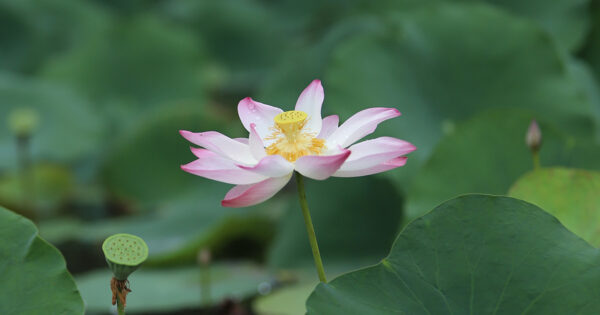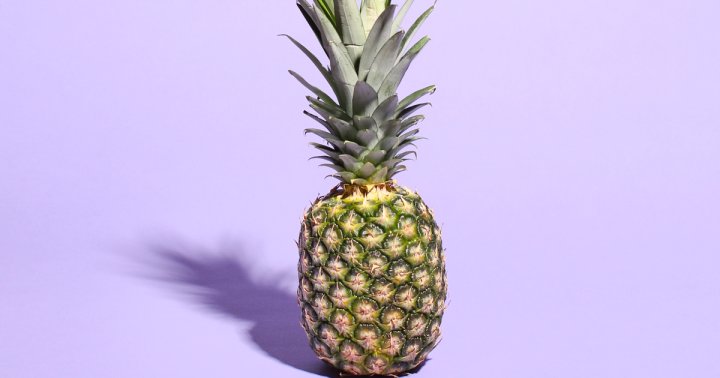How To Use Mala Beads In Meditation, Yoga, And More
The post How To Use Mala Beads In Meditation, Yoga, And More appeared first on The Yoga Nomads.
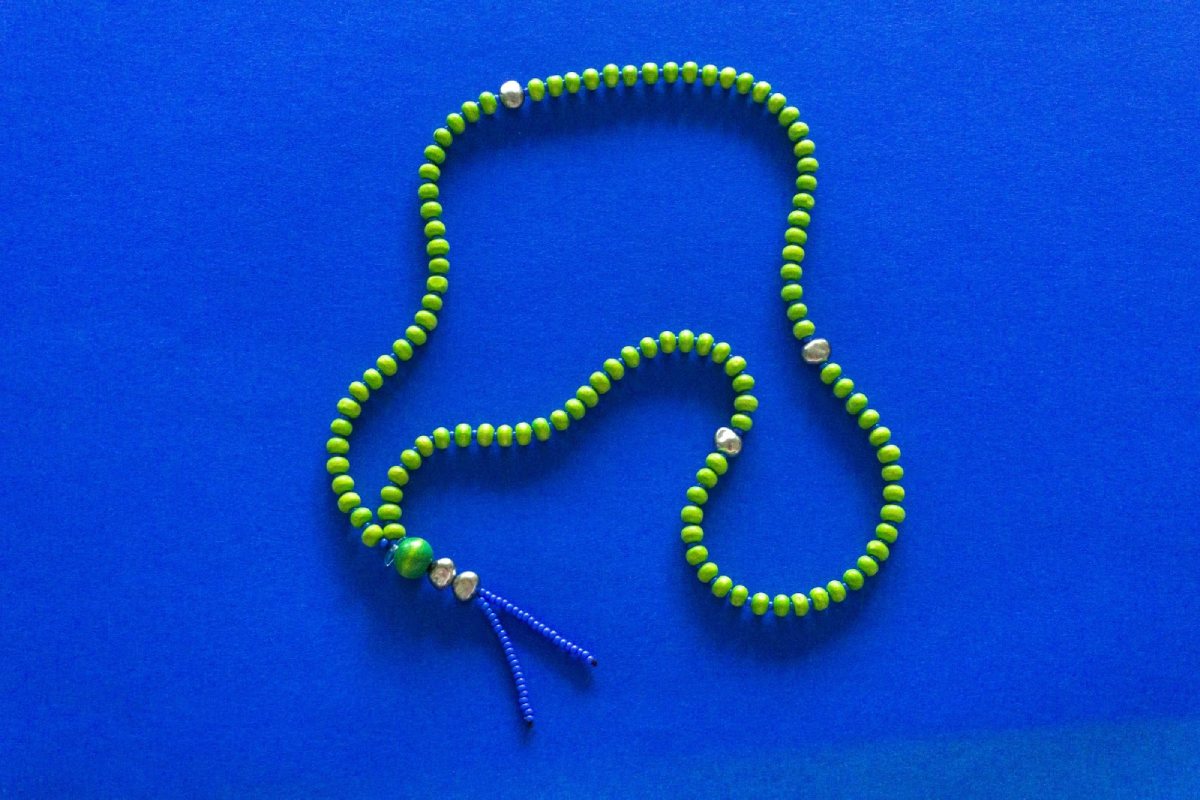
Mala beads are most commonly known as a tool for meditation, but these sacred prayer beads serve many more purposes. Beyond using them in meditation, the simple act of wearing them can protect you from harm. They can also cleanse negative energy from your aura and guide you along your spiritual journey.
Other practical uses of mala beads include yoga and energy healing work. By learning how to use prayer beads and their benefits, you can advance further in your spiritual practice and feel calmer and more grounded in your daily life.
What Are Mala Beads?
Mala beads are a string of beads used as a meditation tool to cultivate focus or worn as a piece of sacred beaded jewelry. They have been used in Hindu chanting practices for thousands of years and in Tibetan Buddhism for even longer, where they are known as Buddhist or Tibetan prayer beads.
Tibetan prayer beads are used by monks and Buddhist practitioners to help them stay focused as they recite mantras or chants. Traditionally, a Tibetan mala will have 108 counting beads and one guru bead, also known as the Sumeru.
Both Hinduism and Buddhism see 108 as a sacred number, mentioned in ancient texts like the Vedas. Aside from 108 counter beads and one guru bead, most Buddhist prayer beads have a tassel representing the lotus flower, a sacred symbol of higher consciousness. Some mala necklaces also have marker beads to help you keep track of your repetitions.
Mala Beads In Meditation Practice

You can use a mala bead in meditation practice in one of two ways. The first is to stay focused on the object of your meditation, such as a mantra or the breath (which we will explain below). The second is to simply wear them around your neck to absorb the calming and grounding energy they carry.
How to use prayer beads in mantra meditation
The traditional way of using beads for meditation is to help recite mantras, known as Japamala practice; Japa is a Sanskrit word meaning “the muttering of a mantra.” Japa meditation involves repeating a mantra or other sacred sound and has roots in Hinduism, Jainism, Sikhism, and Buddhism.
There are some Indian beliefs that you should only hold prayer beads in your right hand, with the mala draped over your middle finger. This is because the left hand is considered impure. However, with a Tibetan mala or prayer bead, you can use them in the right or left hand.
To use Japa mala or prayer beads in Japa meditation:
Find a comfortable position with your spine straight and shoulders relaxed.Hold your beads in your right hand, positioning the thumb and middle finger as described above.Close your eyes and take a few deep breaths to center yourself.Begin with the first bead right next to the guru bead, holding the bead between your thumb (on top) and middle finger (below). After your first repetition, use your thumb to pull the next bead towards you. Once you arrive at the last counter bead, either finish your meditation or do another 108 repetitions going back in the opposite direction.According to ancient tradition, you should not touch the mala beads with your index finger. This finger represents fire and the ego and thus, carries negative energy. The ego is the greatest obstacle to attaining enlightenment, which is the traditional purpose of meditation.
How to use a mala in breath meditation
You can also use mala beads to help you remain focused in breath meditation. In this case, you follow the method above, but instead of one chant per bead, you take one full breath (a deep inhale and full exhale) for each one. Alternatively, take a few deep breaths at every bead if you want to extend your meditation or challenge your focus.
Mala Beads In Yoga
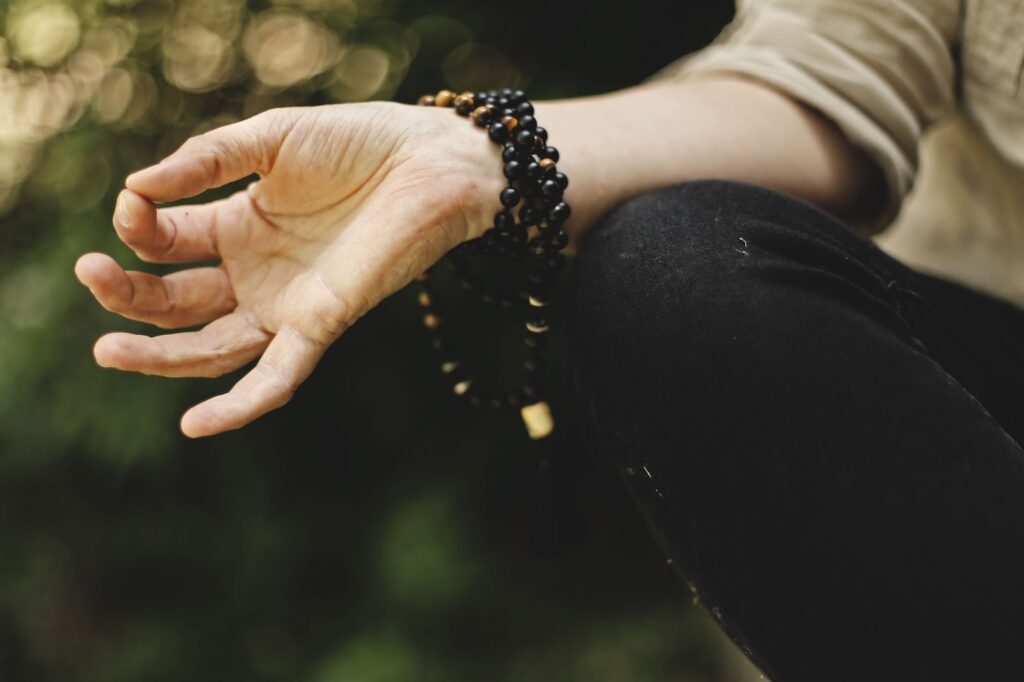
In yoga practice, a mala can help you focus on your body and breath. They are best used in meditative postures such as the lotus pose, where you can use the method above.
Mala beads are beneficial in slow, passive styles of yoga such as yin or restorative. In these yoga styles, you can use the mala beads while holding each posture. In this case, take 108 breaths or chant 108 mantras for each pose; then, when you return to the guru bead, change position.
Many practitioners also like to wear a mala or prayer beads during their yoga practice to enhance the feelings of grounding and centering. As you can infuse your prayer beads with intentions, wearing mala jewelry during yoga can help you stay connected to them. In addition, their energy can help settle your mind and clear any negative energy around you.
Mala Beads In Energy Healing
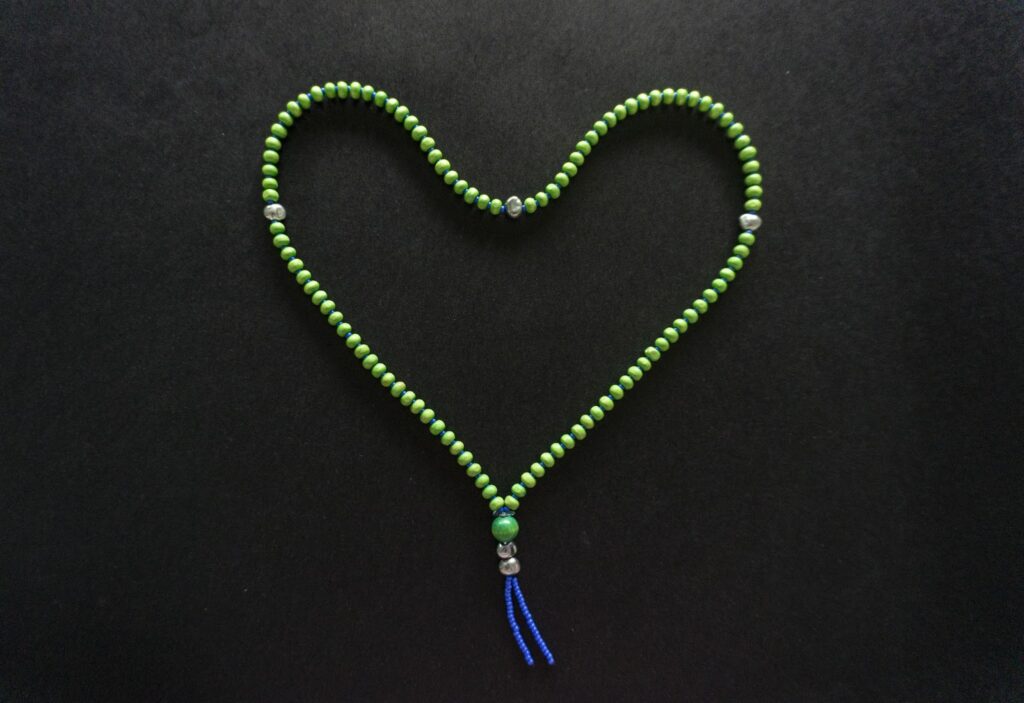
Some mala beads feature crystals and semi-precious stones that carry energy healing properties. In particular, many guru beads are made from chakra crystals and thus, can be used to heal or balance the chakras.
For example, a rose quartz guru bead can help open the heart chakra, promoting self-love and compassion. Alternatively, an Amazonite guru bead can release throat chakra blockages like fear of speaking your truth.
You can use mala beads for energy and chakra healing simply by wearing them around your neck. However, you can also use it in chakra meditation. To do this, chant the chakra’s seed mantra 108 times, visualizing the energy in the energy center. You can do this for only one chakra or all seven chakras, starting at the root chakra and moving up to the crown.
Alternatively, you can combine chakra chants with yoga. There are specific yoga postures that stimulate particular chakras. For example, twists target the solar plexus, and hip openers target the sacral chakra. Each time you hold an asana that stimulates a chakra, you can use the mala beads to chant the chakra’s seed mantra 108 times before changing the pose.
How To Use Mala Beads In Everyday Life
You can wear all types of mala beads, such as Buddhist prayer beads, throughout the day as a constant reminder of your spiritual practice. Every time you see or feel your mala beads, you can use it as a prompt to take a deep breath, connect to your body, and return to the present moment.
Furthermore, malas are made from materials that carry healing qualities, such as rudraksha seeds, semi precious gemstones, sandalwood, or rosewood. They all evoke positive and cleansing energy, but each of these materials has different attributes. Therefore, you should choose the one that has the quality you are looking to cultivate.
Rudraksha seeds have a calming effect on the heart and senses, regulating the heartbeat and improving blood circulation. Therefore, mala necklaces made from these seeds are ideal if you suffer from stress or anxiety. Sandalwood is also calming for the mind and ideal for anxiety. In addition, it can reduce inflammation and even reduce signs of aging. Spiritually, sandalwood is believed to bring the wearer closer to god or heighten universal connection.Rosewood boasts antiseptic and analgesic qualities and reinforces immune defenses. It is commonly used for bacterial and fungal infections and skin disorders like eczema and acne. All crystals and semiprecious stones carry unique properties. Clear quartz is a popular crystal used, which is said to clear energetic blockages, realign the chakras, and remove any negative energy from your aura.Activating Your Mala Beads
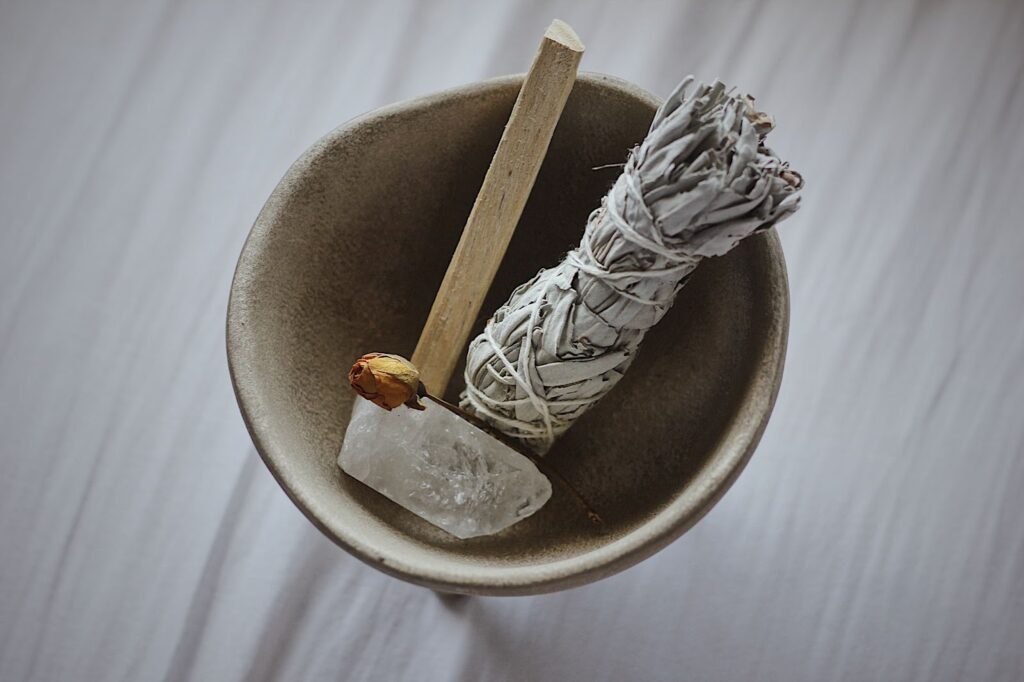
Before you start meditating with your prayer beads, you should first activate them in an intention-setting ceremony. The ritual lets you set your intention and seal an energetic bond between you and the beads, helping you get the most out of them. Here’s how to activate your new Japa mala bead:
Find a comfortable meditation position. Light a candle or incense to set the mood if you wish.Visualize yourself feeling a sense of inner peace and calmness. State your intention at loud at least three times while moving the beads through your fingers (avoiding the index finger.) For best results, make your intention as specific as possible.Chant the mantra “Om Hrim Namah Shivaya Om” at least three times. This is traditionally used for activating and sealing the energy in a mala. Sit with your mala holding it in your right hand for at least five minutes. While doing this, keep your intention strong in your mind and maintain a calm and peaceful presence.Once you have activated your beads, you may want to cleanse them. In addition, some people cleanse their beads from time to time to remove any negative energy they may have absorbed. Moreover, if you share your beads with someone else, you should clean them before using them again yourself.
There are various ways you can cleanse your mala. The easiest method is to leave them outside during the night to absorb the moon’s energy. Alternatively, you can clean them by burning sage over them.
What To Do If Your Mala Breaks
If your mala breaks, you will likely feel sad and worried about why it happened and what it means energetically. Many people believe that a broken mala represents a fractured cycle, which, although it sounds terrible, is actually a positive thing.
If your mala breaks, it is likely because the intention you initially set for it is completed or no longer needed. It may even mean that you have broken a karmic cycle or pattern that you have been working on. Therefore, it can signify spiritual growth and be an opportunity to welcome a new beginning.
When this happens, thank the mala for its support and protection. Instead of trying to repair your broken mala, purchase a new one. Follow the same activation process, setting a new and different intention for your new mala.
If you developed an attachment with your previous mala, you will likely not want to throw it away. So instead, place it on your altar as a reminder of your spiritual progress.
Final Thoughts
Wearing beads for meditation can help you stay focused and, thus, deepen your spiritual practice. However, the benefits of mala or prayer beads extend beyond a meditating tool. Wearing mala necklaces or wrist malas serve as a continuous physical reminder to practice mindfulness throughout the day.

 JimMin
JimMin 







